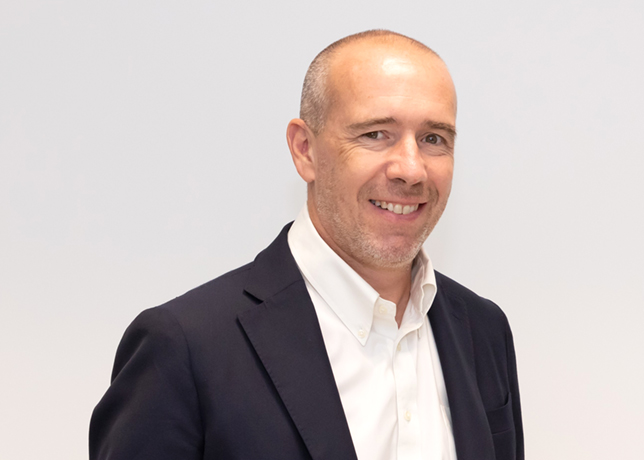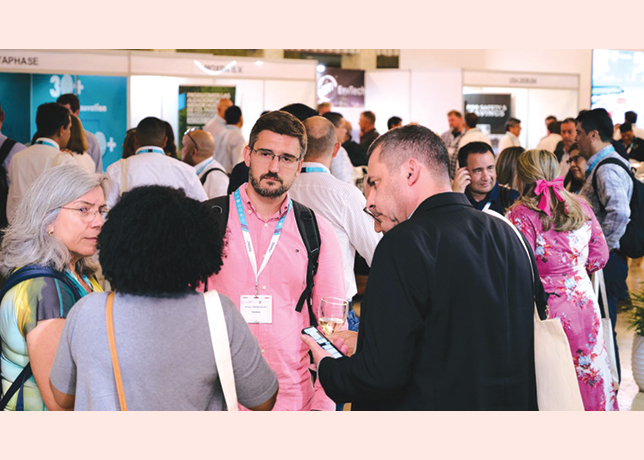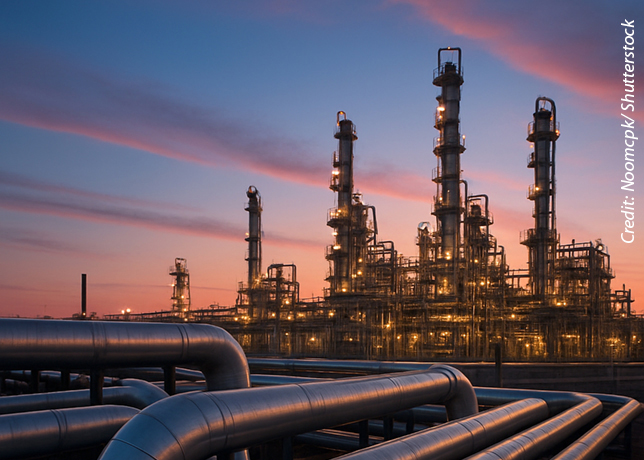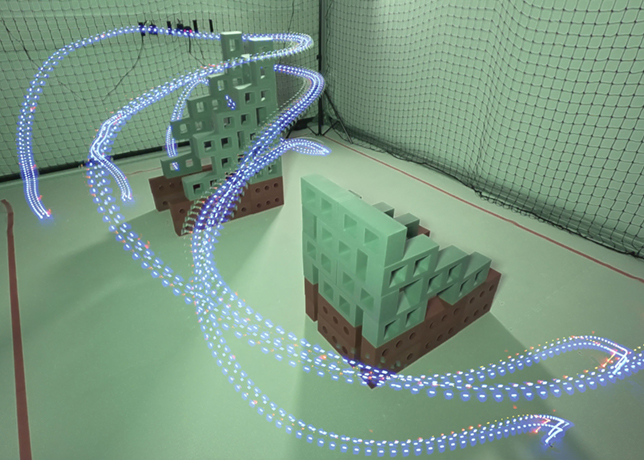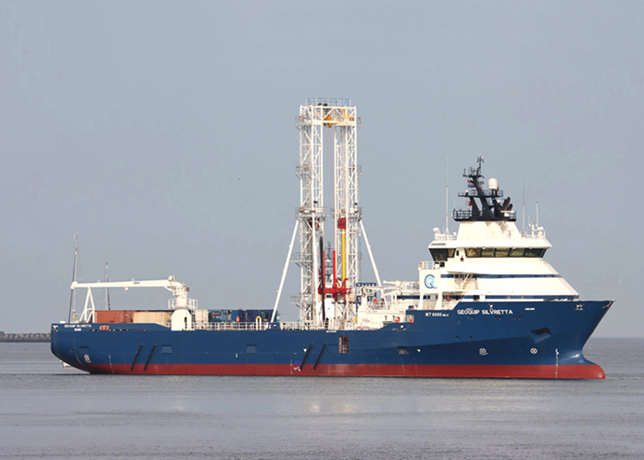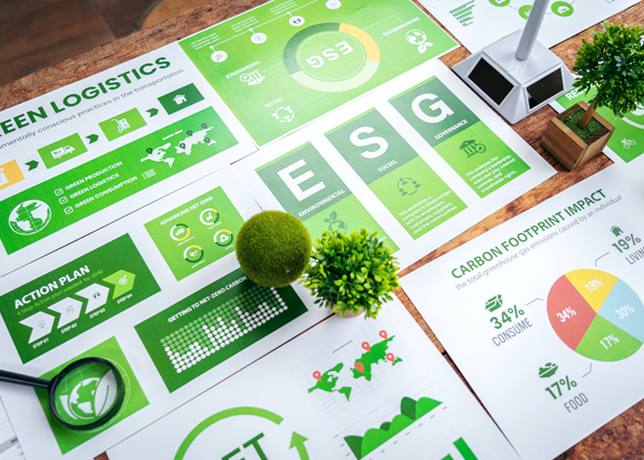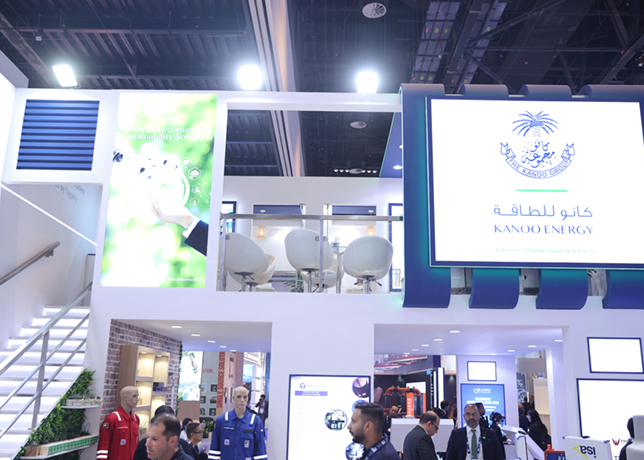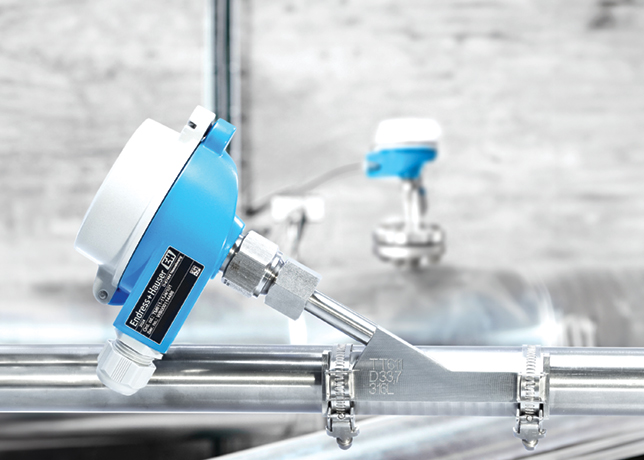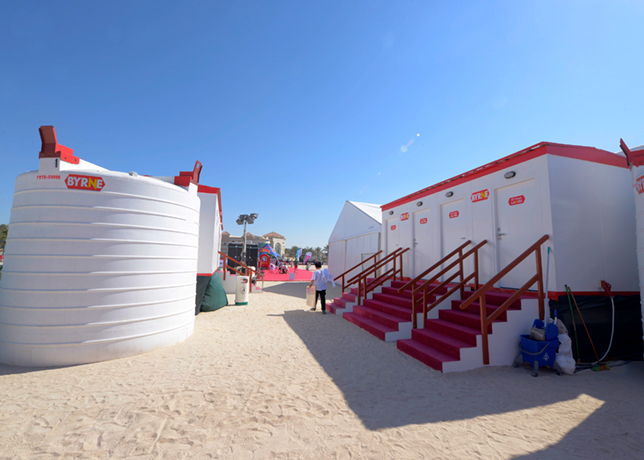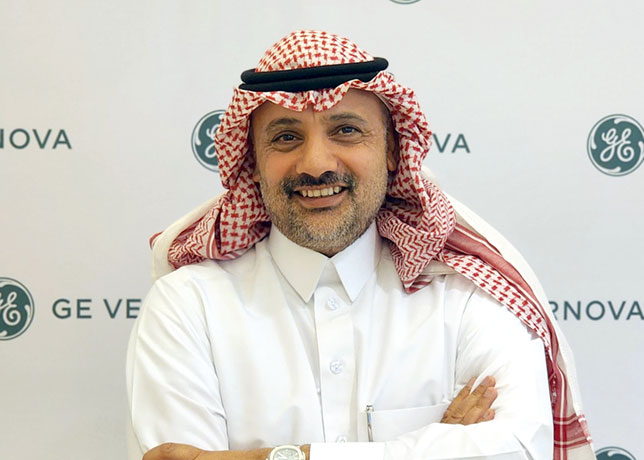
 A rendering of Statevolt Emirates Gigafactory
A rendering of Statevolt Emirates Gigafactory
The $3.2-billion Statevolt Emirates project will be the first gigafactory at large scale, dedicated to battery production in the UAE, helping to accelerate the country’s positioning as a leader in green transition, says CEO Lars Carlstrom in an exclusive interview
Statevolt Emirates has announced plans for a groundbreaking $3.2 billion battery-cell gigafactory in Ras Al Khaimah, UAE. This initiative is poised to make significant strides in the field of energy storage.
The gigafactory, which will span 60 hectares in the Al Ghail Industrial Zone within RAKEZ, represents a monumental step forward in battery technology and aligns with the UAE's vision to lead in green technology and energy transition.
The initial focus of the factory will be on producing semi-solid state battery cells, with plans to transition to solid-state cells as capacity expands. This progression will enable Statevolt Emirates to offer batteries with superior safety and extended lifecycles, setting a new benchmark in the industry, says Statevolt Emirates CEO Lars Carlstrom in an exclusive interview with OGN magazine.
What sets the Statevolt Emirates gigafactory apart is its commitment to producing next-generation solid-state battery cells. The facility will employ a modular approach to ensure efficiency and scalability, enabling quick deployment and seamless upgrades, says Carlstrom highlighting in the interview the market the project will serve and Ras Al Khaimah authorities’ support for the project.
Excerpts from the interview:
Could you provide an overview of the new gigafactory project in Ras Al Khaimah?
 |
Lars Carlstrom |
The Statevolt Emirates battery-cell gigafactory will be built in Ras Al Khaimah, UAE. This project represents a significant step forward in energy storage, with a capital investment of $3.2 billion. Initially, we'll focus on producing semi-solid state battery cells, aiming to transition to solid state cells as we expand our capacity. Our factory is designed to set a new benchmark in battery technology, offering superior safety and extended lifecycle.
Statevolt batteries will also be adaptable to various climates and conditions in our target export markets of Africa, India, and across the GCC.
This project will span 60 hectares in the Al Ghail Industrial Zone in RAKEZ, aligning with the UAE's vision to become a leader in green technology and energy transition. With an expected annual production capacity of up to 40GWh when fully operational, we are well-positioned to meet the growing local and global demand for energy storage solutions.
What prompted you to choose Ras Al Khaimah as the location for this major investment?
UAE holds significant potential for green industrialisation and there are several reasons why:
• Government initiatives and vision. The UAE Vision 2021 and the UAE Energy Strategy 2050 aim to diversify the energy mix, reduce reliance on fossil fuels and increase the share of clean energy.
• Economic Diversification Goals. The UAE is actively seeking to diversify its economy away from oil dependency. Green industrialisation aligns with this goal by fostering new industries and technologies.
• Strategic location and infrastructure. The UAE’s strategic location at the crossroads of Europe, Asia and Africa coupled with good logistics and transportation infrastructure in general makes it a hub for new technologies and sustainable industries.
• International collaboration and partnerships. UAE actively participates in international agreements and collaborations focused on sustainability and green transition. There is an invitation to collaborate among all the countries with a supportive approach.
In choosing Ras Al Khaimah specifically as the location, we were impressed by the emirate’s expansive development plans, great leadership, and collaborative authorities. Our visions are also aligned – we are dedicated to creating sustainable economies and ultimately aim to improve the economics of energy, which is a central objective of Ras Al Khaimah’s Energy Efficiency and Renewables Strategy 2040.
Furthermore, it will also allow us to contribute to the Emirate’s economic development, creating direct jobs and generating investments in the community.
Statevolt Emirates would be the first gigafactory at large scale, dedicated to battery production in the UAE, helping to accelerate the country’s positioning as a leader in green transition.
Can you elaborate on the kind of support and incentives provided by RAKEZ?
We are grateful to the RAKEZ authorities for seeing the immense potential in this project and have been collaborating closely for several months.
RAKEZ plays a key role in supporting Statevolt with infrastructure and utilities, guiding and sustaining us on several administrative processes. Additionally, we are currently in the process of signing a long-term land lease agreement with them, which will represent a key milestone for our project.
RAK's rapid development in the Energy sector and the support we are receiving from authorities make this an ideal partnership, and we look forward to our continued work together.
Which are the other countries Statevolt operates in? At what stage are the projects there? How will these projects help the RAK project?
Statevolt currently has projects in the UAE and the US – we consider those two as sister projects, leaning on the same concept and vision – helping to support energy storage solutions – as both countries are working on improving the grid and the infrastructure needed to allow for swifter implementation of green industrialisation.
Our experience shows that working with the right partners is key to a successful outcome. Therefore, our UAE venture will see partnerships coming from our US project as well as established Asian players, particularly in regard to cell technology and supply chain.
We also know the importance of having the government’s support, and we are extremely grateful for all the support the RAKEZ authorities have shown us so far. We are confident that by working together, we will achieve great success.
What makes this gigafactory state-of-the-art and different from other battery manufacturing facilities? How will these advancements contribute to more efficient and durable energy storage solutions (ESS)?
With the production of our next-generation solid-state battery cells, the gigafactory differentiates itself from the current players in the market. At Statevolt Emirates, efficiency and scalability are key for our production process. By implementing a modular approach, we can ensure quick deployment and seamless upgrades, paving the way for reliable infrastructure that allows us to meet growing market demands.
While we’re starting production with semi solid-state battery cells, our aim is to transition to solid state once the technology is available. By doing so, we will be using batteries that have superior safety and an extended lifecycle, which will contribute to more efficient and durable energy storage solutions.
Your website says Statevolt builds a technology-agnostic battery cell production facility. Can you explain this for our readers?
By committing to a technology-agnostic approach, we get to focus on finding the best solutions for battery cells and using the best and most advanced technologies.
Our modular approach enables us to be flexible and adapt to new technologies as they arise, continuously enhancing our product.
Battery technology is constantly changing. How do you plan to keep yourself abreast of technology?
We carefully evaluated our cell technology roadmap, which was one of the most complex and time-consuming processes. In summary, we will begin producing our cells using semi-solid technology. This technology not only surpasses the standard LFP (Lithium Iron Phosphate) but also offers several advantages, including improved safety, higher energy density, and a longer lifespan. The cell technology we have chosen, has been rigorously tested by several prominent players in the ESS (Energy Storage Systems) and automotive industries, therefore we further mitigate the risks.
It is important to note that our cell technology will be managed through a licensing agreement. We are currently establishing a partnership with an experienced Asian player in the industry to ensure we have access to the best technology available for our project.
Furthermore, our modular engineering approach will allow us to seamlessly incorporate technological advancements. This flexibility will enable us to transition to solid-state technology in the future. Our objective is to create a next generation gigafactory, utilizing the safest and most advanced battery cell technology available.
How will the gigafactory contribute to the local and global economy? What are the key markets and industries you are targeting with your energy storage solutions?
Locally, the construction of this gigafactory aligns with the UAE’s strategic vision to become a leading hub for green technology and energy transition. Our aim is to reinforce the country’s position as a leader in sustainable industrial development by upskilling the local workforce and creating up to 2,500 direct job opportunities. Through our project and engagement with surrounding communities, we will establish a large ecosystem that benefits the UAE. This ecosystem will attract skilled workers, raise employment levels, and create a multiplier effect on the economy. Additionally, the gigafactory presents an opportunity for co-location with some of our global partners, particularly those linked to supply chain development.
Globally, with our ‘sustainability first’ approach, we aim to play an integral role in the energy transition and solidify our status as a global leader in green industrialization.
Statevolt Emirates’ gigafactory is positioned to meet the surging global demands for energy storage solutions, particularly in key markets such as India and Africa. These markets are crucial for stabilizing the grid, enhancing renewable energy integration, and improving energy efficiency. We anticipate supplying batteries to a diverse range of customers, targeting battery parks and more consumer-focused products like power walls.
Can you discuss measures being taken to ensure the sustainability of the project?
As a gigafactory, Statevolt Emirates will play a critical role in sustainable manufacturing and significantly contribute to reducing carbon footprints across various industries through the following measures:
• Efficiency: Our facility is designed to optimize production processes, ensuring higher energy efficiency compared to traditional manufacturing facilities.
• Renewable Energy: In the long term, we aim to transition to clean energy sources to minimise emissions associated with battery production.
• Sustainable Energy Solutions: By establishing our gigafactory, we aim to strengthen sustainable energy management.
• Supply Chain Optimisation: While initially leveraging existing global supply chains, our long-term strategy involves localising the supply chain to reduce transportation emissions and enhance sustainability.
What are the key components of the project (construction, machinery, technology, etc).
One of the key requirements for this project is to have the right plot for the site construction, and this is something we have worked on over the last 6 months with the RAKEZ team. Factors such as land size, shape, logistics, utilities, and proximity to ports have been meticulously evaluated. We are on the verge of finalising a long-term land lease agreement with RAKEZ authorities, which represents an important milestone for the project.
Another important element is having an approved and efficient design for the gigafactory, which we are currently adapting for the location in Ras Al Khaimah.
As mentioned above, you need to have a competitive and proven yet edgy cell technology to appeal to clients. Stay tuned as we have great news coming up on this topic.
Lastly, securing a reliable supply chain is a key, especially at this time when most countries, except China, currently have a deficit in several minerals. To ensure our project is off to a good start, we have created a roadmap in supply chain, making sure we have all the necessary components for an efficient production. While our supply chain won’t be all local at the start, we are aiming for co-location as mentioned earlier to make UAE a center of excellence for this industry.
These components form the cornerstone of our approach to establishing the gigafactory in Ras Al Khaimah. While other elements also play a role, these areas are pivotal in our initial strategy and development plan.
What are some of the biggest challenges you anticipate in constructing and operating the factory?
In this dynamic industry, our experience has taught us not to underestimate any challenge. If I were to highlight the most critical challenges requiring attention, they would be:
• Scaling up Production and Minimising Scrap Levels: Achieving efficient scaling while minimizing scrap is paramount. We are proactively partnering with experienced Asian companies to fortify our readiness in addressing production challenges as we will expand.
• Supply Chain Management: Establishing a reliable supply chain for essential components amidst global disruptions and mineral shortages poses ongoing challenges.
• Workforce Development: Recruiting and training a skilled workforce capable of operating and maintaining the intricate machinery and processes involved in battery production is crucial.
• Environmental Sustainability: Maintaining sustainable practices throughout construction and operation to reduce our carbon footprint remains a top priority.
What opportunities do you see arising from this project for both Statevolt Emirates and the broader green technology sector? Do you plan any other such projects in the region?
Our project is centered around sustainability and driving the green transition forward. With batteries offering superior safety and extended lifecycles, we aim to penetrate diverse markets, facilitating the decarbonisation of critical sectors and directly contributing to global and regional green transitions.
Focusing on establishing and operating the gigafactory in Ras Al Khaimah represents a significant investment in both RAK and the UAE. By doing so, we play a pivotal role in bolstering the country’s reputation as a leader in sustainability and green technology.
A primary objective is to benefit the local community through job creation and upskilling programs in the coming years. Additionally, as mentioned earlier, our long-term vision includes fostering a robust supply chain ecosystem. This initiative aims to attract suppliers and companies to invest in the UAE, thereby generating more job opportunities and boosting the overall economy.
On a personal note, can you tell us a bit about your background and what inspired you to take up this role at Statevolt Emirates?
I’m a Swedish-born entrepreneur with over 30 years of experience across multiple industries. With a particular focus on real estate and green industrialisation, I have always concentrated on identifying new opportunities for accelerating the latest technological advancements.
As a strong believer that battery cell factories can be used as a dual-track solution for boosting energy transition and economic development, I advocate for building them in areas looking for expansion and growth, which is why I chose to launch Statevolt Emirates in the UAE. The country has a huge amount of untapped potential and the hunger to keep growing and developing, with collaborative and visionary authorities whose ambitions in sustainability match my own. My mission is to accelerate the transition to a cleaner and greener mobility system, generate employment opportunities and deliver direct and indirect economic benefits for local communities as well as the global market – enabling a future of global energy independence.
Is there anything else you would like to share about the gigafactory or Statevolt Emirates' future plans?
Our gigafactory will play a critical role in sustainable manufacturing and the reduction of carbon footprint, through optimised production processes, advanced automation and recycling systems, and by using clean energy sources for production in the long run.
As the need for more sustainable energy management keeps growing, we aim to continuously enhance technological innovation for faster green energy transition, working on balancing the grid and contributing to the future of low-carbon energy solutions.
We will continue to put sustainability and communities first, focusing on education and people upskilling in Ras Al Khaimah, serving markets that are currently facing energy issues, and pushing the UAE’s sustainability agenda further, cementing the country's position as a leader in this important mission.
By Sree Bhat








